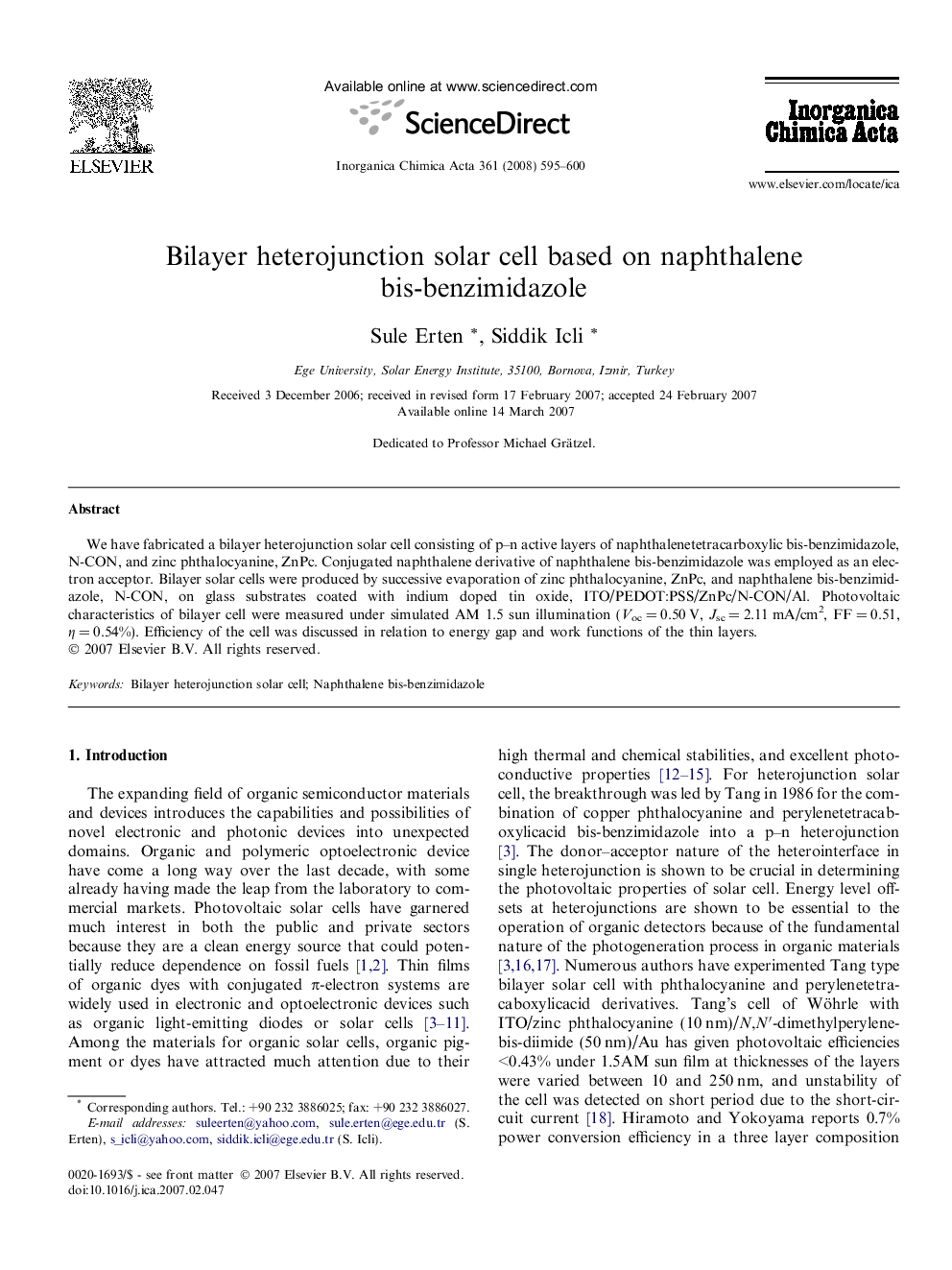| Article ID | Journal | Published Year | Pages | File Type |
|---|---|---|---|---|
| 1309227 | Inorganica Chimica Acta | 2008 | 6 Pages |
We have fabricated a bilayer heterojunction solar cell consisting of p–n active layers of naphthalenetetracarboxylic bis-benzimidazole, N-CON, and zinc phthalocyanine, ZnPc. Conjugated naphthalene derivative of naphthalene bis-benzimidazole was employed as an electron acceptor. Bilayer solar cells were produced by successive evaporation of zinc phthalocyanine, ZnPc, and naphthalene bis-benzimidazole, N-CON, on glass substrates coated with indium doped tin oxide, ITO/PEDOT:PSS/ZnPc/N-CON/Al. Photovoltaic characteristics of bilayer cell were measured under simulated AM 1.5 sun illumination (Voc = 0.50 V, Jsc = 2.11 mA/cm2, FF = 0.51, η = 0.54%). Efficiency of the cell was discussed in relation to energy gap and work functions of the thin layers.
Graphical abstractWe have fabricated a bilayer heterojunction solar cell consisting of p–n active layers of naphthalenetetracarboxylic bis-benzimidazole, N-CON, and zinc phthalocyanine, ZnPc. Conjugated naphthalene derivative of naphthalene bis-benzimidazole was employed as an electron acceptor. Bilayer solar cells were produced by successive evaporation of zinc phthalocyanine, ZnPc, and naphthalene bis-benzimidazole, N-CON, on glass substrates coated with indium doped tin oxide, ITO/PEDOT:PSS/ZnPc/N-CON/Al. Photovoltaic characteristics of bilayer cell were measured under simulated AM 1.5 sun illumination (Voc = 0.50 V, Jsc = 2.11 mA/cm2, FF = 0.51, η = 0.54%). Efficiency of the cell was discussed in relation to energy gap and work functions of the thin layers.Figure optionsDownload full-size imageDownload as PowerPoint slide
